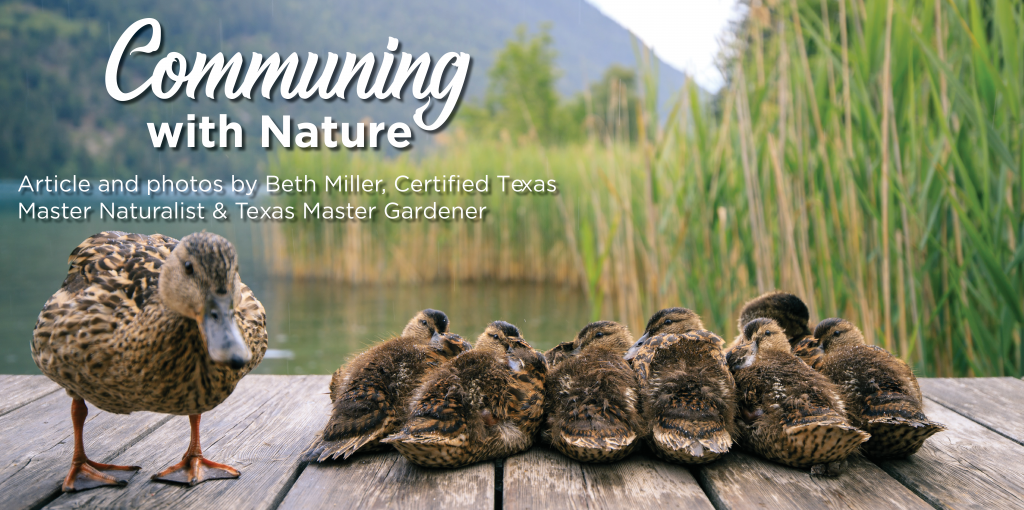January 5, 2021 dawned sunny and cold but warmed to 60, with no wind and only a few clouds. It was a perfect day for the Audubon Christmas Bird Count (CBC) in Polk County. Piney Wood Lakes Chapter of Texas Master Naturalists (PWLTMN) had five parties of two in the field to cover a 15-mile-wide circle which included Lake Livingston State Park, the dam, and spillway.
The PWLTMN birders sought 120 birds expected to be seen in the Piney Woods circle. Birds seen but not on the list would be double and triple checked as new or rare to the area. The teams logged a total of 72 bird species, including five birds that should have been on the list but were not. Purple finch and clay-colored sparrow will be listed as new regulars to the area in winter.
The Piney Wood region is a major migratory pathway in fall and spring. Lake Livingston provides a winter habitat for American white pelicans, several varieties of gulls and terns, and the ever popular (or not) cormorants. One of the teams, both with double certification of Master Naturalist and Master Gardener, found a large rookery (breeding area) with approximately 2,000 double-crested cormorants courting and building nests. Each of the five teams logged sightings of woodland favorites including Carolina wrens, black-capped chickadees, eastern bluebirds, and squawking blue jays.
History of the Audubon CBC
This year’s event is the 121st CBC since the first results were published on December 25, 1900 after 27 people in 25 locations across the North American continent conducted a count. They likely had no idea that their “Christmas Bird Census” would be growing in 2020 and include the Western Hemisphere and beyond.
Conducted between December 14 and January 5, bird-loving volunteers collect and contribute data to one of two critical databases that keep ornithologists and conservation biologists aware of action needed to protect birds and their habitats.
The CBC data from 2019 resulted in a published a study using decades of data that detailed a grim picture. Human activities had been primarily responsible for a steady decline of nearly three billion North American birds since 1970. Additionally, by tracking how bird ranges move over time, conservationists can see where to prioritize their efforts for future climate changes.
Audubon CBC data are also used to measure how birds are already responding to climate change. With two-thirds of North American bird species at increasing risk of extinction by the end of this century, Audubon CBC data is more important than ever for effective conservation.
In 2019, 81,601 observers out in the field and watching feeders tallied more than 42 million birds representing more than 2,500 different species—around one-quarter of the world’s known bird population. Sadly, the total is 6 million fewer total birds than the 2018 Audubon CBC total, already a historically low number. Audubon scientists are deep into the research trying to understand the decline.
On the bright side, 2019 was the first time that the Galápagos circle was included with its natural history classroom of Las Islas Encantadas where Charles Darwin developed his speciation and evolution theories. The huge number of endemic species found on the islands contributed to the cumulative CBC database growth.
The Audubon CBC is a community science project organized by the National Audubon Society. There is no fee to participate. The Audubon CBC is open to birders of all skill levels and Audubon’s free Bird Guide app makes it even easier to learn more. For more information and to find a count near you visit www.christmasbirdcount.org.
Piney Wood Lakes Chapter of Texas Master Naturalist serves members across Polk, San Jacinto, Trinity, and Tyler Counties with volunteer opportunities, educational resources and conservation projects. txmn.org/pineywoodlakes SJC Master Gardeners serves members in San Jacinto and Polk Counties. Life-long learners and trained volunteers, master gardeners give time, knowledge, and expertise to improve the quality of life for neighbors and visitors. txmg.org/sjmg
Jerry Tullos was safely stopped when he took up the binoculars.
The purple finch was reported by several spotters.
Love them or hate them, double-crested cormorants are here to breed.
Pied-Bill Grebe is a cute water bird only seen in the winter on Lake Livingston.
American white pelicans at the Lake Livingston Dam spillway let the cormorant take the lead.
